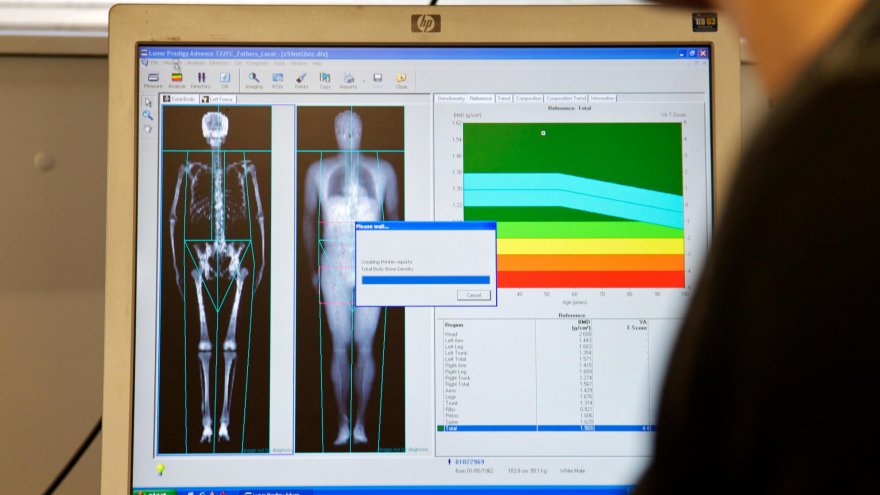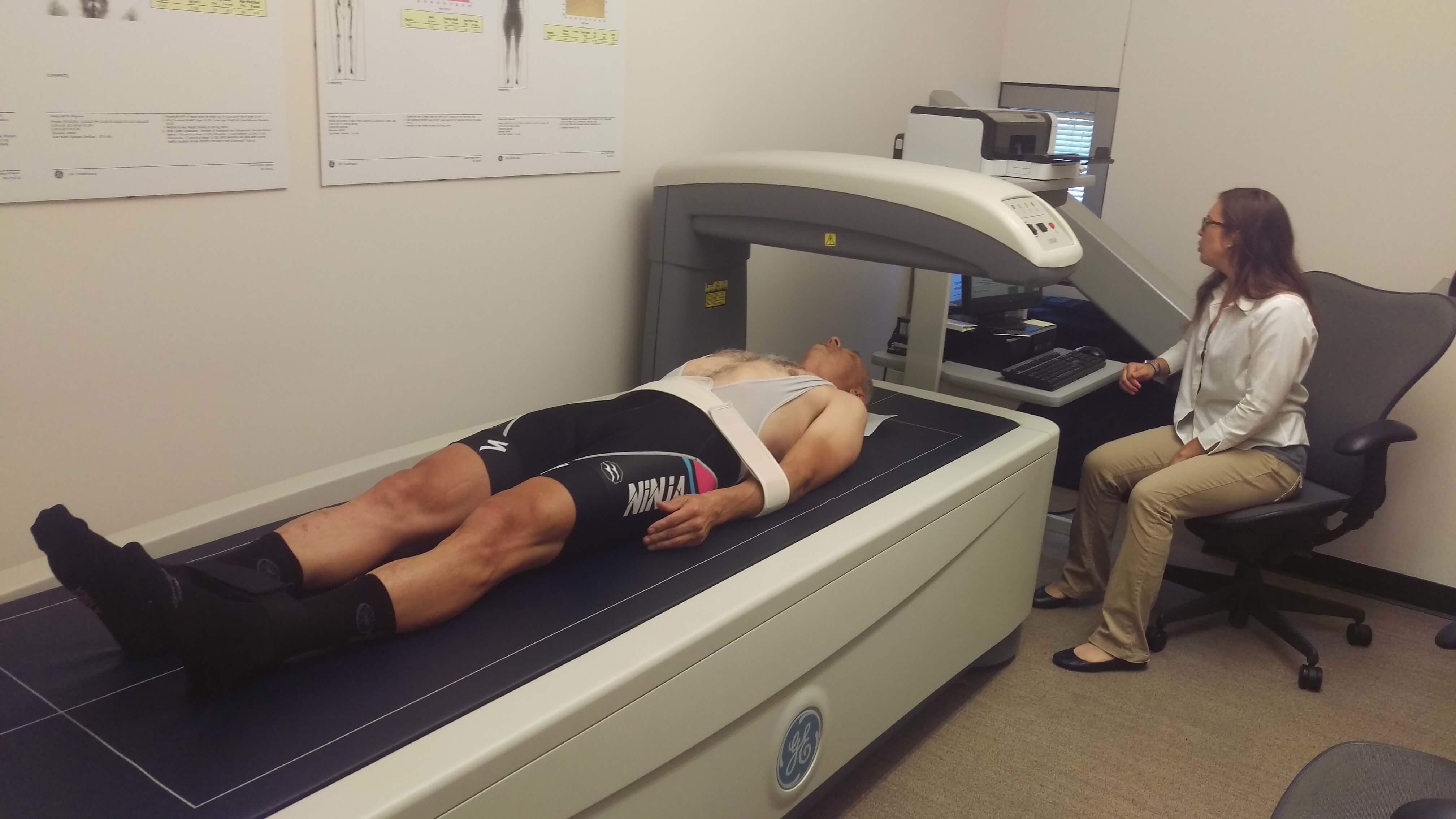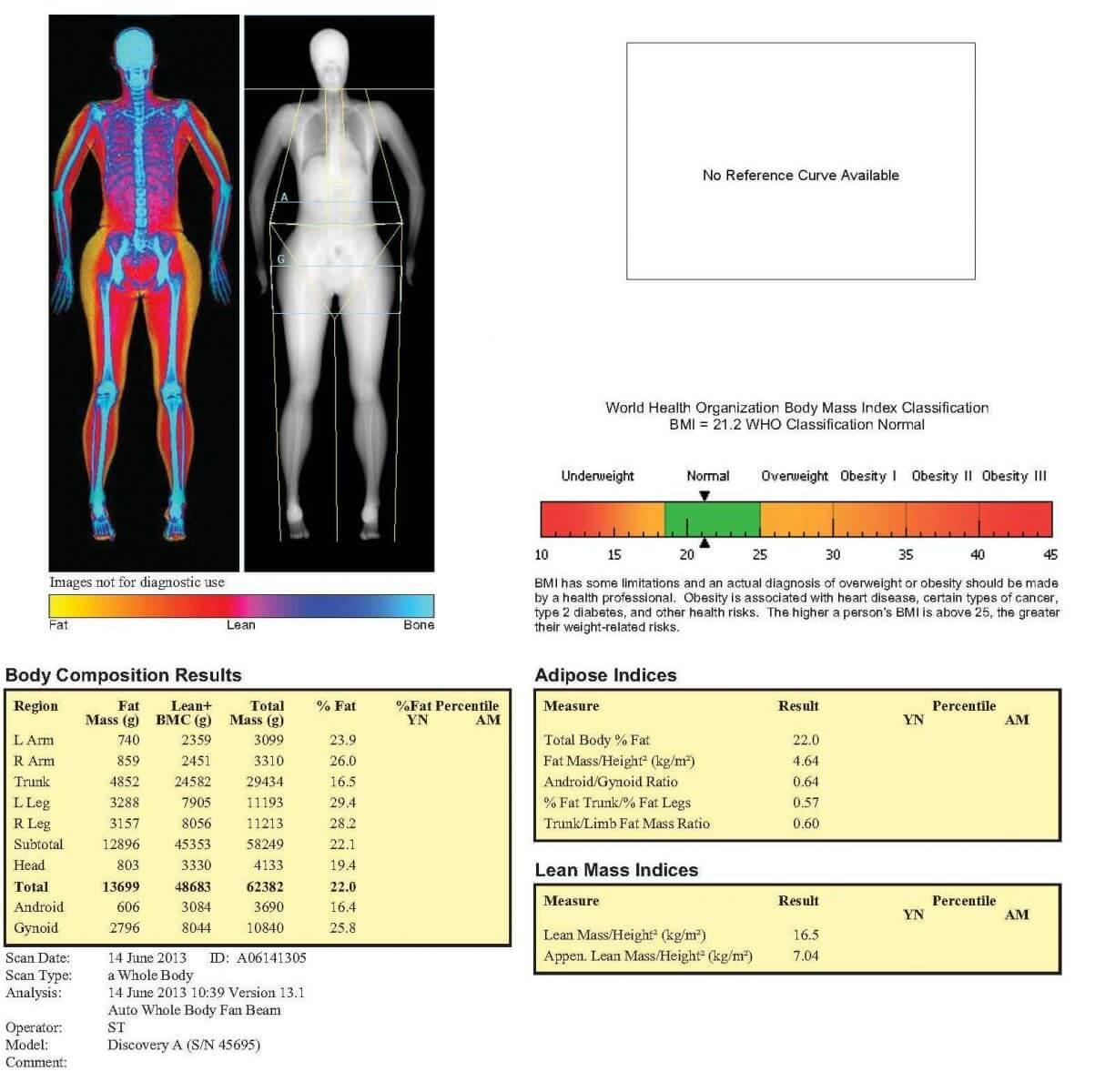Importance of DXA Scans for Runners

If you are about to start a fitness program, this is the ideal opportunity to have a DXA (DEXA) scan. It is the noninvasive, quick, and simple method to measure body fat, which is commonly used to assess a risk of developing fractures diagnose osteoporosis and for diagnosing osteoporosis.
You should be prioritizing losing fat as opposed to weight. However, if you do not know how much fat and muscle you have now, you will not know what you are aiming to achieve or how to get there. To the gram, it will measure and tell you how much lean mass and fat you have on your legs, arms, and trunk. Many runners and other athletes use DEXA scans for either diagnosing or curing of some health conditions.

Bone Density Scan (DXA) explained
Also referred to as bone densitometry or dual-energy x-ray absorptiometry (DXA), bone density scanning is used to measure bone loss using x-ray technology. DXA is the currently recognized standard for the measurement of bone mineral density (BMD).
The most frequently used and oldest form of internal medical body imaging is the x-ray. Doctors use x-rays for the diagnosis and treatment of medical conditions. They are a noninvasive test which provides imaging by exposing parts of the body to small doses of ionizing radiation. The result is images of the inside of the body.
DXA is most frequently carried out on the lower hips and spine. For children, the whole body is sometimes scanned, and this may also be done in adults. Low bone mass is often screened using peripheral devices using ultrasound or x-ray or ultrasound. A CT scan accompanied by specialized software is used in some communities to diagnose or monitor low bone mass (QCT). Whilst this is accurate, it is used less frequently than DXA scanning.

How to prepare
Eat normally on the day of the test. For at least one day before the test, do not take calcium supplements.
Wear loose and comfortable clothes, avoiding metal objects such as belts, zippers, and buttons. Remove items in pockets from the areas being scanned such as keys of wallets in pockets.
For the scan, you may be required to remove your clothes and wear a gown. There may also be a requirement to remove jewelry, glasses, dental objects and any other objects which may interfere with the x-ray images.
If you recently underwent a barium examination or were injected with contrasted material for a CT or radioisotope scan, inform your doctor. If this is the case you may be required to wait 10-14 days before you can have a DXA test.

DXA Benefits for athletes
Serious athletes should know the benefits of DXA. As mentioned earlier, it is widely used in medical and clinical applications, with the main use being to diagnose osteoporosis. Bone density testing is important mainly for post-menopausal women but osteoporosis can also be suffered by men, and less commonly in children. In recent years, however, the application of DXA scans has been widened and the sports industry makes use of the scans to help athletes target optimum body composition.
DEXA can help in identifying the optimum range of body fat for specific sports
Research has delivered actual and optimum ranges of body fat for athletes in individual sports that are different to the recommended ranges for the general population. For example, when preparing for competition, male bodybuilders will aim for less than 10% body fat, swimmers aim for 12-15%, cyclists 8-10% and runners typically are at 12% body fat. DXA scans can help athletes improve their performance in their chosen sport by measuring body composition, helping them measure actual and set future targets.
Understanding, measuring and changing body composition with DXA
With an initial scan that delivers an accurate picture of body composition, an athlete (with their coach if relevant) has an excellent basis from which a fitness and diet routine can be determined, focussing on how they want the body fat composition and muscle/fat ratio to change. Progress can be assessed with subsequent DXA scans.
DXA enables understanding and improvement of body symmetry
Currently, DXA is the only method by which the regional body composition can be measured and assessed. This is relevant because of the importance of body composition balance and symmetry in sports performance. Many sports including bodybuilding, cycling and swimming demand body symmetry – i.e. equal strength or muscle size on both sides of the body. With DXA scans, lean mass and body fat can be measured in specific body areas enabling an athlete to target and improve imbalances, thereby improving performance.
Scans can enable better and faster rehabilitation
DXA scans provide information that enables informed decisions and plans to be made for rehabilitation after an injury and enforced periods of inactivity. Where muscle is lost and/ or fat gained, a DXA scan can identify the areas to be worked on so a diet and fitness routine can be formulated and then subsequent scans will help in monitoring the progress of the rehabilitation program.
DXA scans are a motivational tool
Motivation is a huge factor in sports performance and athletes seek it from many angles: from within, from coaches/instructors, teammates, and mentors. In the absence of an athlete having access to professional help such as a coach or team, improvements, as recorded by DXA scans, can maintain and improve motivation in ways other tests such as the skinfold test, that are not so equivocal, do not present the overall picture or can be misinterpreted, are able to.

The limitations of DXA Bone Densitometry
- A DXA test will indicate the relative risk of fracture but is unable to predict who might experience a fracture.
- Whilst the method is effective in bone density measurement, it is of minimal use for individuals with spinal deformities or who have undergone spinal surgery.
- Whilst central DXA devices offer a higher level of sensitivity compared to pDXA devices, they are also considerably more expensive.
- Performing a test upon a peripheral location like the wrist or heel may be helpful in predicting the risk of hip or spine fracture.Body scan is a great security measure that could be a big motivator for runners. Measure your personal body fat via DXA scans and run with a peace of mind!
Latest Articles
 Is Running on a Treadmill Easier Than Running Outside?Runners have their own preferences, whether it is treadmill running, running outside on the road, or exploring trails. So...
Is Running on a Treadmill Easier Than Running Outside?Runners have their own preferences, whether it is treadmill running, running outside on the road, or exploring trails. So... Is It OK to Use Trail Running Shoes on the Road?While trail running shoes can be used on roads, especially in situations where a runner encounters mixed terrains or pref...
Is It OK to Use Trail Running Shoes on the Road?While trail running shoes can be used on roads, especially in situations where a runner encounters mixed terrains or pref... How to Fix Sore Quads After Running?Rest, ice, gentle stretching, and over-the-counter pain relievers can help soothe sore quads after running. Also, ensure ...
How to Fix Sore Quads After Running?Rest, ice, gentle stretching, and over-the-counter pain relievers can help soothe sore quads after running. Also, ensure ... 10 Fruits With The Most Electrolytes to Replace Sports DrinksThese fruits are high in electrolytes such as potassium, magnesium, and calcium, essential for hydration, muscle function...
10 Fruits With The Most Electrolytes to Replace Sports DrinksThese fruits are high in electrolytes such as potassium, magnesium, and calcium, essential for hydration, muscle function...

